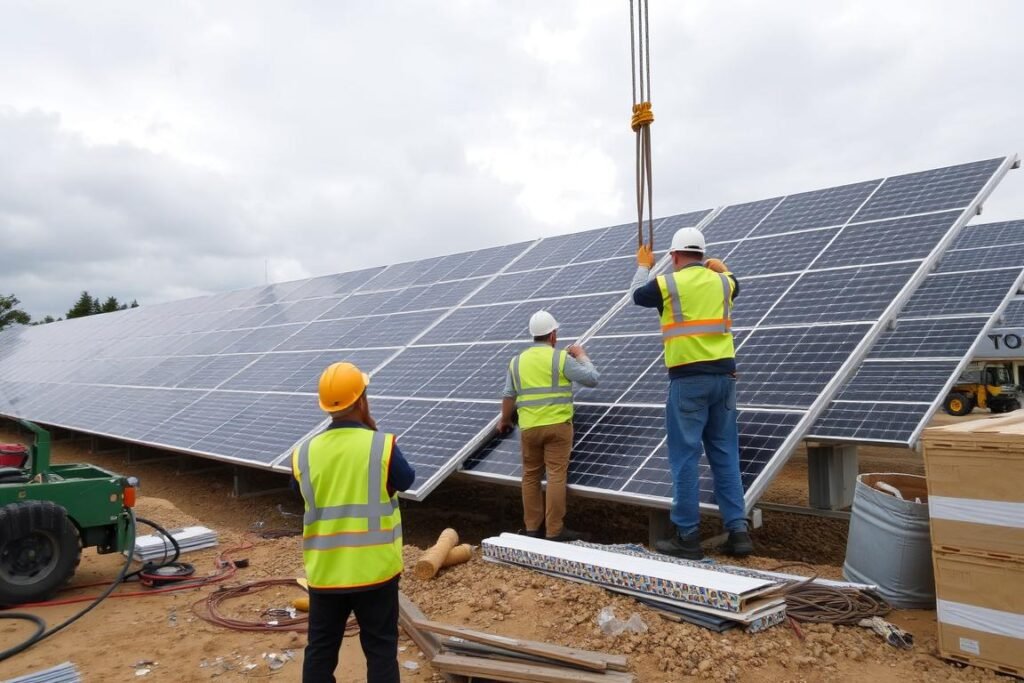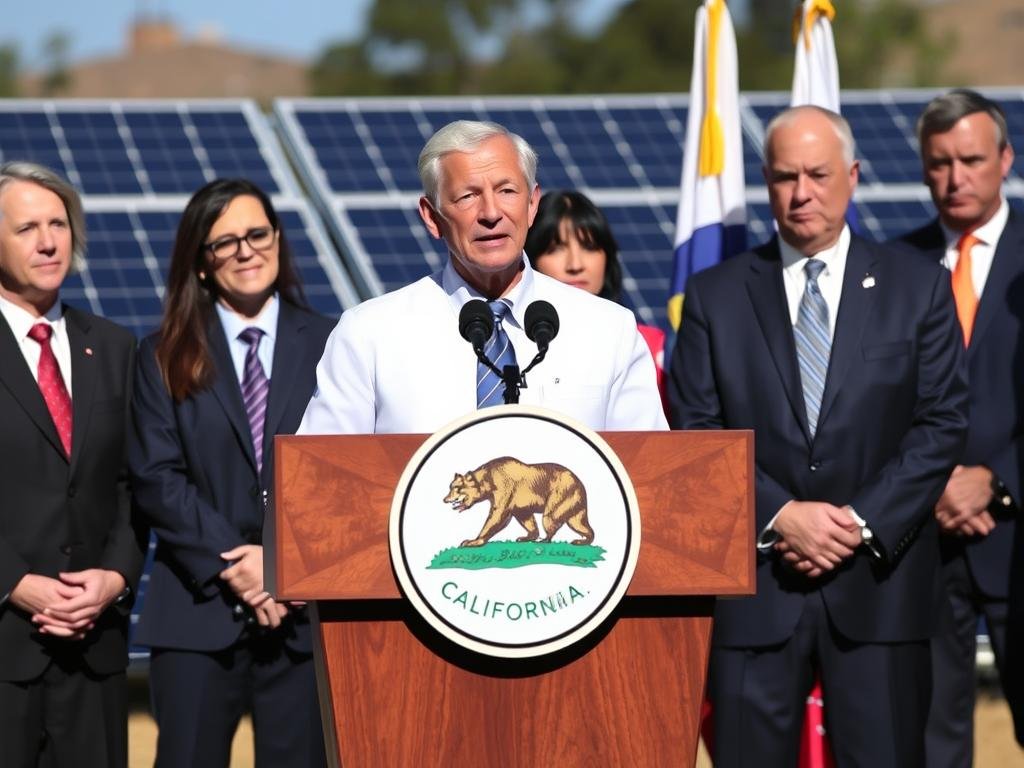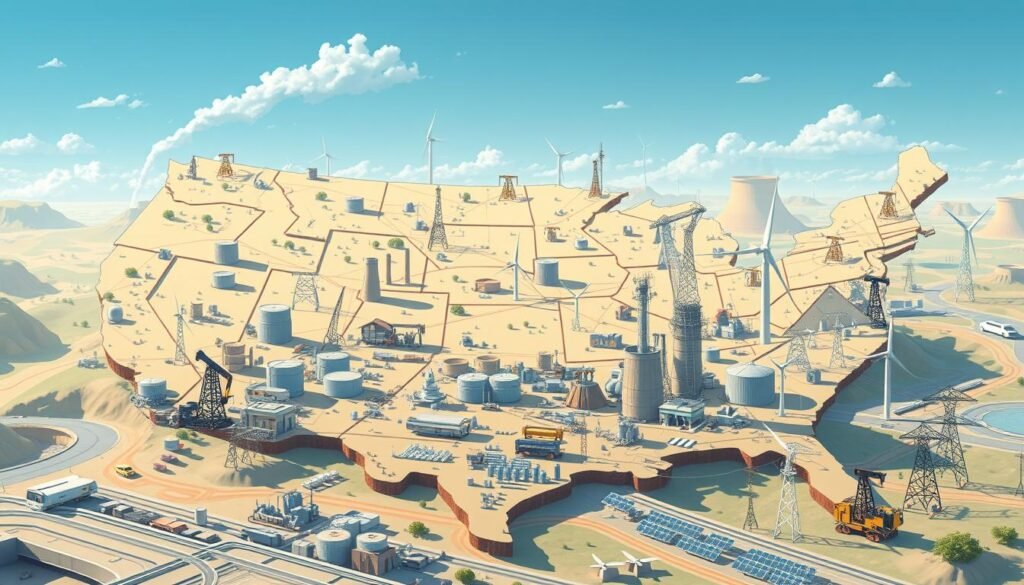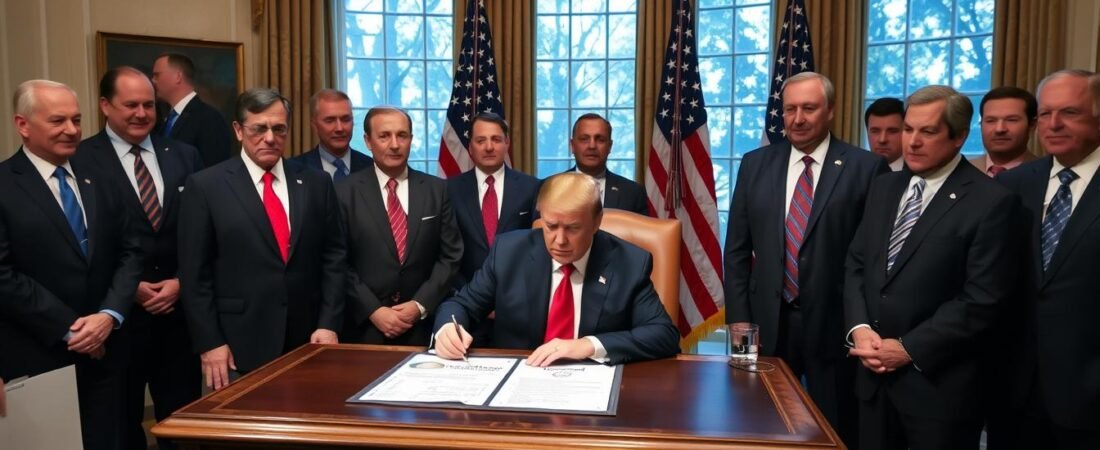President Donald Trump’s “Big Beautiful Bill” represents one of the most significant shifts in American energy policy in decades. Passed by a Republican-controlled Congress and signed into law on July 4, 2025, this sweeping legislation fundamentally alters the trajectory of U.S. energy development. By dismantling many Biden-era climate initiatives while bolstering support for traditional energy sources, the bill has sparked intense debate about America’s energy future and its global climate commitments.
According to analysis from Princeton University’s REPEAT Project, the policy changes embedded in this legislation could add an extra 7 billion tonnes of greenhouse gas emissions to the atmosphere by 2030 compared to the previous administration’s targets. Yet supporters argue these same policies will strengthen energy independence, create jobs, and reduce consumer costs. This article examines the bill’s energy provisions, their potential impacts, and what they mean for America’s energy landscape.
Key Energy Provisions in Trump’s “Big Beautiful Bill”
The energy components of the “Big Beautiful Bill” represent a dramatic reversal from the previous administration’s climate-focused approach. Among the most consequential changes are the elimination of tax credits for renewable energy projects, electric vehicles, and clean manufacturing that were central to Biden’s landmark Inflation Reduction Act (IRA).
Under the IRA, wind and solar projects could receive tax credits until 2034. Following the Republican bill, most projects would need to begin construction within the next year to qualify for these incentives. This sudden policy shift has already sent shockwaves through renewable energy markets, with many planned projects now facing uncertain futures.
The legislation also targets vehicle emissions standards and power sector regulations that were designed to reduce carbon output. Trump has issued executive orders rolling back these standards, complementing the legislative changes in the bill. Meanwhile, the package includes provisions to expedite fossil fuel development, including streamlined permitting for oil and gas projects on federal lands.
Fossil Fuel Industry: A Significant Boost

The “Big Beautiful Bill” provides substantial support for traditional energy sources. By removing regulatory hurdles and extending tax benefits to fossil fuel producers, the legislation aims to increase domestic production of oil, natural gas, and coal. Industry analysts project these measures could lead to a significant expansion of drilling activities, particularly in states like Texas, North Dakota, and Pennsylvania.
The bill also allocates funding for new infrastructure to support fossil fuel development, including pipelines and export facilities. This approach aligns with Trump’s campaign promises to achieve “energy dominance” and reduce dependence on foreign energy sources. Supporters argue these policies will create jobs in energy-producing regions and help stabilize global energy markets.
However, critics point out that the global energy landscape has changed dramatically since Trump’s first term. Renewable energy costs have continued to fall, and many major economies have accelerated their transitions away from fossil fuels. Some energy economists question whether boosting fossil fuel production will deliver the economic benefits promised, particularly as global demand patterns evolve.
Impact on Renewable Energy Development

The REPEAT Project estimates that cumulative new solar capacity additions will drop by 29 gigawatts (GW) by 2030 and around 140GW by 2035 as a result of the bill. For wind power, the decrease is projected to be 43GW by 2030 and 160GW by 2035. These reductions represent a significant slowdown in the growth trajectory that had been established under previous policies.
Without federal support, many renewable energy developers are reassessing their project pipelines. Some projects will likely proceed without subsidies, particularly in states with favorable renewable portfolio standards or in areas with exceptional resource quality. However, the overall pace of deployment is expected to slow considerably.
The bill’s impact extends beyond generation to affect the entire clean energy supply chain. The elimination of tax credits for domestic manufacturing of solar panels, wind turbines, and batteries threatens to undermine recent investments in U.S.-based production facilities. Several manufacturers have already announced reviews of planned expansions in light of the policy changes.
Economic Implications of the Energy Shift
Beyond its environmental implications, the “Big Beautiful Bill” is expected to have significant economic consequences. REPEAT estimates household energy costs are likely to be $165 higher in 2030 and more than $280 higher by 2035 following the passing of the bill. Some of this increase can be attributed to fewer electric vehicles on the road, leading to higher petrol and diesel consumption and prices.
Without tax credits to boost the construction of new generation capacity, residential electricity prices are set to increase by 7% – or $110 – by 2026, for the average U.S. customer, according to analysis conducted for the Clean Energy Buyers Association. In Wyoming, electricity prices may rise by as much as 30% over the next year. Other Republican states, such as North Carolina and Tennessee, are also expected to see near-term price rises in the double digits.
The bill’s supporters counter that these analyses fail to account for the economic benefits of increased domestic energy production. They argue that expanding fossil fuel development will create jobs and generate tax revenue in energy-producing regions, offsetting potential price increases for consumers.
U.S. Emissions Trajectory Under the New Policies
One of the most significant consequences of the “Big Beautiful Bill” is its impact on U.S. greenhouse gas emissions. Under the previous administration, the United States had committed to reducing emissions by 50-52% below 2005 levels by 2030 as part of its nationally determined contribution under the Paris Agreement. The new policies fundamentally alter this trajectory.
According to Carbon Brief’s analysis of REPEAT Project modeling, U.S. emissions are now set to drop to just 3% below current levels by 2030 – effectively flatlining – rather than falling 40% as required to hit the now-defunct target. This would leave the U.S. around 2 billion tonnes short of its greenhouse gas emissions target for that year, adding emissions equivalent to around 4% of the current global total annually.
The cumulative gap between the previous pathway and the Trump administration’s trajectory amounts to 7 billion tonnes of emissions over the next five years. To put this in context, it is roughly the annual output of Indonesia, the world’s sixth-largest emitter.
State-Level Impacts and Responses

The impact of the “Big Beautiful Bill” will vary significantly across states, with some embracing the fossil fuel emphasis while others seek to maintain momentum on clean energy through state-level policies. States like California, New York, and Massachusetts have already announced plans to strengthen their renewable portfolio standards and clean energy incentives to offset the federal policy changes.
Conversely, fossil fuel-producing states such as Texas, Wyoming, and West Virginia are positioning themselves to capitalize on the renewed support for traditional energy sources. These states anticipate increased investment and job creation in their energy sectors, though some economic analysts caution that global market forces may limit the extent of new development regardless of policy changes.
The divergent state responses highlight the increasingly fragmented nature of U.S. energy policy. This patchwork approach creates challenges for energy companies operating across multiple jurisdictions and may lead to significant regional disparities in energy prices, job opportunities, and environmental outcomes.
International Implications and Climate Diplomacy

Trump’s withdrawal of the United States from the Paris Agreement, coupled with the domestic policy changes in the “Big Beautiful Bill,” has significant implications for international climate diplomacy. The U.S. had previously played a leadership role in global climate negotiations, and its retreat from these commitments creates a vacuum that other nations must fill.
China, the European Union, and other major economies have reaffirmed their climate commitments despite the U.S. policy shift. However, the absence of U.S. leadership complicates efforts to achieve global emissions reductions targets. Some analysts worry that other countries may use the U.S. retreat as justification to weaken their own climate ambitions.
The bill also affects international energy markets and trade relationships. Increased U.S. fossil fuel production could lead to greater exports of oil and liquefied natural gas, potentially competing with other major producers like Russia and Saudi Arabia. Meanwhile, the rollback of clean energy manufacturing incentives may benefit Chinese producers of solar panels, batteries, and other clean technology components.
Industry Perspectives on the Policy Shift
Reactions to the “Big Beautiful Bill” vary widely across different segments of the energy industry. Traditional oil, gas, and coal companies have generally welcomed the policy shift, with many announcing plans to accelerate development projects that had been on hold. The American Petroleum Institute called the legislation “a return to sensible energy policy that recognizes the continued importance of fossil fuels to American prosperity.”
Renewable energy companies and clean technology manufacturers, meanwhile, face a more challenging outlook. While many remain optimistic about the long-term prospects for clean energy given falling costs and growing demand, the near-term policy environment has become significantly less favorable. The Solar Energy Industries Association warned that the bill “threatens tens of thousands of American jobs and billions in investments.”
Utilities and power companies occupy a middle ground, with their responses largely dependent on their existing generation mix and investment plans. Those with significant renewable portfolios have expressed concerns about the policy shift, while those more heavily invested in fossil fuels see potential opportunities.
Consumer Impact: Energy Prices and Choices

For American consumers, the “Big Beautiful Bill” has mixed implications. The projected increases in energy prices will affect household budgets, with the impact varying by region, income level, and energy consumption patterns. Rural and low-income households that spend a larger percentage of their income on energy may be particularly vulnerable to price increases.
The elimination of tax credits for electric vehicles, which previously offered up to $7,500 per purchase, will slow the adoption of these technologies. This could result in tens of millions fewer electric cars and vans being sold over the next decade, according to industry projections. Consumers interested in transitioning to electric vehicles will face higher upfront costs without these incentives.
Energy efficiency improvements for homes and businesses may also slow without federal support. The bill removes or reduces several programs that had provided incentives for upgrading to more efficient appliances, improving insulation, and installing smart energy management systems.
Pros and Cons of the Energy Policy Shift
Potential Benefits
- Increased domestic energy production and potential energy independence
- Job creation in fossil fuel-producing regions
- Reduced regulatory compliance costs for energy companies
- Potential for increased exports of oil and natural gas
- Preservation of traditional energy infrastructure and expertise
Potential Drawbacks
- Higher projected greenhouse gas emissions and climate impacts
- Increased household energy costs for consumers
- Slowed development of renewable energy infrastructure
- Loss of clean energy manufacturing jobs and investments
- Diminished U.S. leadership in global climate initiatives
Future Outlook and Potential Scenarios

The long-term implications of the “Big Beautiful Bill” for America’s energy future remain uncertain. While the legislation creates a less favorable policy environment for clean energy in the near term, other factors continue to drive the energy transition. Technological innovation, falling costs for renewables, corporate sustainability commitments, and state-level policies will all influence the trajectory of U.S. energy development.
Market forces may also limit the impact of the policy changes. Many utilities have already announced plans to phase out coal plants for economic reasons, regardless of federal policy. Similarly, major automakers have invested heavily in electric vehicle technology and may continue their transition plans despite the removal of consumer incentives.
The durability of the policy changes is another key consideration. Future administrations could reverse course, reinstating clean energy incentives and climate regulations. This policy uncertainty creates challenges for long-term planning in the energy sector, potentially leading to underinvestment in both traditional and renewable energy infrastructure.
Frequently Asked Questions
How will the “Big Beautiful Bill” affect my energy bills?
Will the bill create or eliminate jobs in the energy sector?
How does the bill affect U.S. climate commitments?
Will renewable energy development stop completely?
What happens to existing renewable energy projects?
Conclusion: Balancing Energy Priorities

The “Big Beautiful Bill” represents a fundamental shift in U.S. energy policy priorities, emphasizing fossil fuel development while reducing support for renewable energy and climate initiatives. This approach reflects a particular vision of American energy security and economic prosperity, one that prioritizes traditional energy sources and immediate economic benefits over longer-term climate considerations.
The full implications of this policy shift will unfold over years and decades, influenced by market forces, technological developments, state-level decisions, and future federal policies. What is clear is that the United States has entered a new chapter in its complex relationship with energy production and consumption, one that will shape not only domestic economic and environmental outcomes but also global energy markets and climate efforts.
As the nation navigates this transition, the challenge remains to balance competing priorities: energy affordability, economic opportunity, environmental protection, and climate resilience. The debate over how best to achieve these sometimes conflicting goals will continue to define American energy politics for years to come.
Stay Informed on Energy Policy Developments
Energy policy continues to evolve rapidly. Subscribe to our newsletter for expert analysis of the latest developments in U.S. energy policy, market trends, and environmental impacts. Our team of energy analysts provides context and clarity on complex policy changes.
